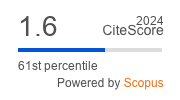Malaysian Journal of Mathematical Sciences, September 2019, Vol. 13, No. 3
MRI-Based Brain Tumor Segmentation using Modified Stable Student's t from Burr Mixture Model with Bayesian Approach
Pravitasari, A. P., Iriawan, N., Safa, M. A. I., Irhamah, Fithriasari, K., Purnami, S. W., and Ferriastuti, W.
Corresponding Email: anindya.apriliyanti@unpad.ac.id
Received date: 1 December 2018
Accepted date: 29 July 2019
Abstract:
Finite Mixture Models have been developed for brain tumor image segmentation using Magnetic Resonance Imaging (MRI) as a media.
The goal is to obtain the best fit model with the appropriate segmentation results to describe the Region of interest (ROI). Image segmentation techniques with a mixture model are used for clustering pixels based on the same colour intensity (grayscale). Many studies of mixture models using asymmetric distributions, such as skew normal and skew-t distribution, have been expanded, owing to the fact that the data pattern in the MRI is not always symmetrical. Furthermore, the research uses some approaches to adaptively capture data pattern and capable of accommodating the skew and even the thicker tails than the normal distribution. This technique is called the Neo-Normal. MRI-based segmentation using Modified Stable Student's t from Burr (MSTBurr) distribution was proposed with the aim of creating an adaptive segmentation method which would be adapted to MRI data pattern distribution changes. The segmentation model is optimized by employing the Bayesian method coupled along with the Markov chain Monte Carlo (MCMC) approach because the analytical solutions
are considered complicated. The results of the analysis demonstrated indicate that the MSTBurr Mixture Model (MSTBurr-MM) could capture
the pattern of MRI brain tumor image better than the Gaussian Mixture Model (GMM) approach.
Keywords: Bayesian, Image Segmentation, Mixture Model, MSTBurr, Neo-Normal









